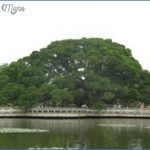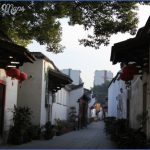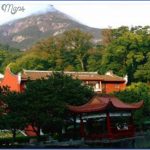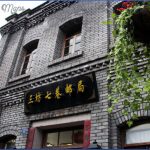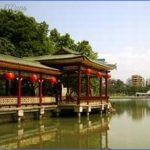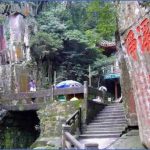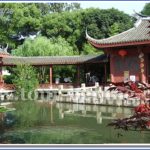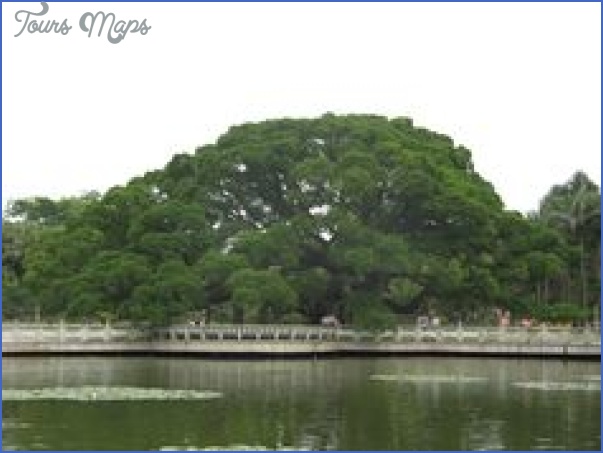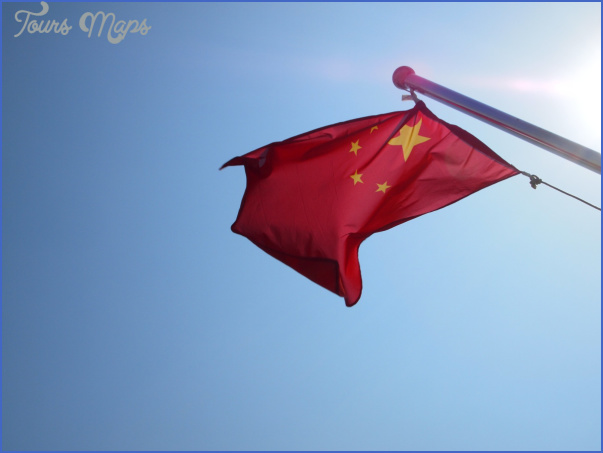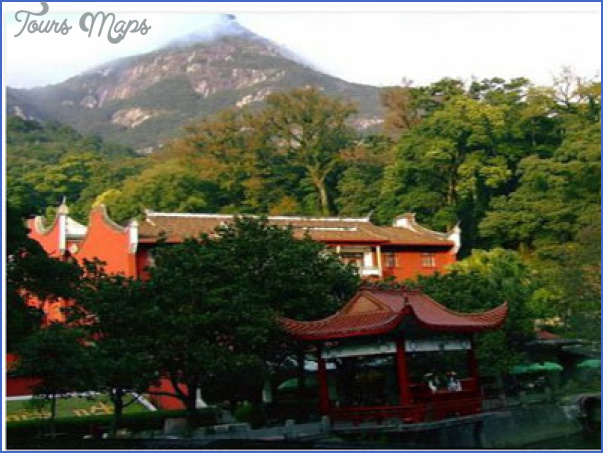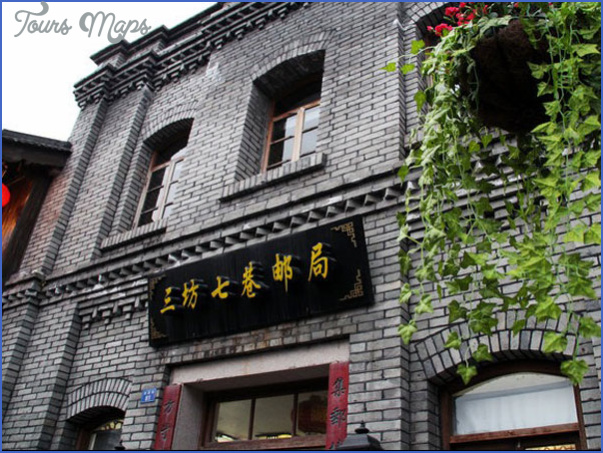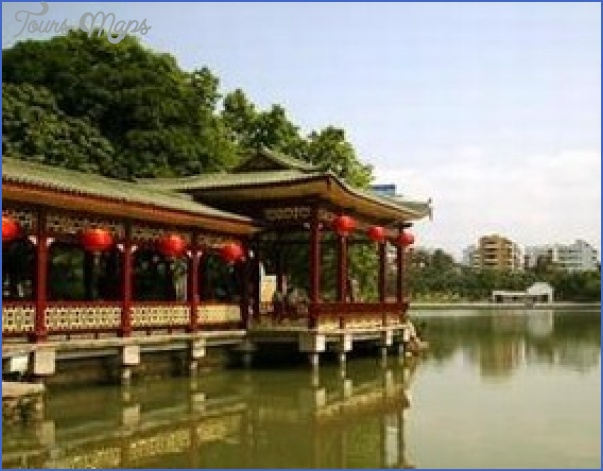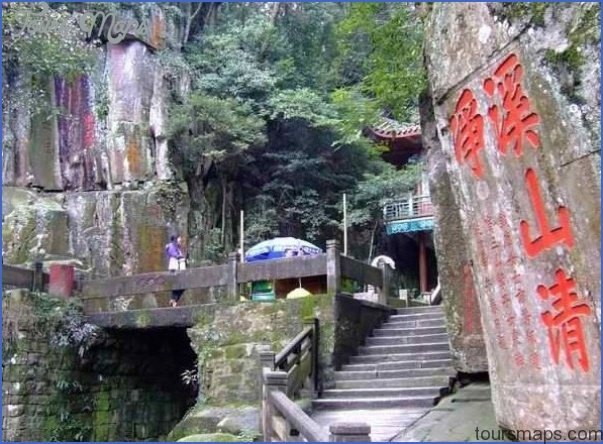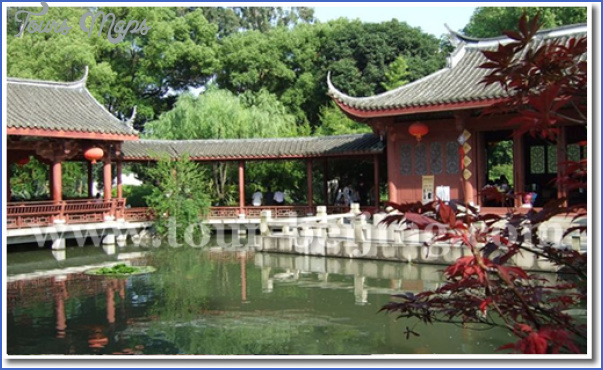Fuzhou lies on the Minjian river in the east of Fujian province and some 50km/30 miles from the sea, at 119°18’E and 26°06’N.
The town can be reached by rail or air from Beijing, Shanghai, Canton, Tianjin and Hangzhou.
Fuzhou has a past stretching back more than 2000 years. In 202 b.c. it was the capital ofthe Yue kingdom and in the 10th c. ofthe Min kingdom. It was given its present name in 725. Fuzhou is known as “Banyan Town” because ofthe subtropical banyan trees planted during the Song period (960-1279). Since that time overseas trade has developed more and more, as a result of which many foreigners have settled in the region, especially on the island of Nantai. In 1842, following the Opium Wars, Fuzhou became one of the five ports which were declared open to foreign trade.
In 1949 industrialisation commenced when Fuzhou was linked to the major rail routes and the Minjiang river was extended to accommodate shipping; the main branches are engineering and light industry.
Sights
Yushan Hill with its fine views dominates the town centre; it is known particularly for the hundred or more inscriptions, dating from the 10th to 19th cž which decorate its rock faces.
The town’s symbol, the 41 m/135ft high, seven-storey White Pagoda at the western foot ofthe hill, was built in 904 as a wooden-clad brick building; however, it burned down in 1534 after being struck by lightning. It was rebuilt in brick in 1548.
Behind it stands a temple (Baita Si) built in the Qing dynasty (1644-1911) on the foundations of a Buddhist temple dating from 905. Today it houses a library.
The temple to the east was built in 1918 in honour of General Qi Jiguang (1528-87), who had fought against Japanese pirates in 1562.
On the top ofthe hill can be seen the Hall ofthe Great Master, or Guanyin Hall (Guanyin Ge), built in 1713. In 1911 it was used as the headquarters of the revolutionary army. An inscription by the Emperor Qianlong (1736-96) on a stone tablet relates how Bodhisattva Avalokiteshvara changed into a woman, the Goddess of Mercy (Guanyin), who is so revered by Chinese Buddhists.
Also in the town centre, 1-5km/1 mile west of Yushan Hill, stands Black Hill, which has been a popular spot for outings for hundreds of years. More than 200 inscriptions are engraved on its rock faces, the best-known being that made in 772 by Li Yangbing, a notable Tang calligrapher. Of historical importance are inscriptions made by some eunuchs from the Ming period (1368-1644) giving detailed descriptions of their many duties, especially of their work in the shipyards.
On the eastern foothills stands the 35m/115ft high granite-built Black Pagoda, dating from the year 941 and so named as a counterpart to the White Pagoda. It stands on the site of a stupa from the Tang period (618 907). In the course of extensive restoration work in 1957 measures were taken to halt the subsidence which had occurred on one side. Near the Black Pagoda can be seen a stele from the Tang era.
West Lake, situated in Xihu Park in the north-west ofthe town, was named after the better-known lake ofthe same name in Hangzhou (see entry), and is a favourite leisure spot. Banyan trees and meadows are a feature of the
land along the banks. The lake was dug out in a.d. 282 as part of of an irrigation project. The Provincial Museum is in Xihu Park.
On the southern slopes of Mount Pingshan in the north of Fuzhou stands the Hualin Si temple, from the Tang period (618-907). The main building, the Sumptuous Hall of the Great Hero (Daixong Baodian) built in the Tong era (960-1279), is all that remains of the early edifice, the other buildings having been added during the Qing dynasty (1644-1911).
This tomb lies in a northern suburb of Fuzhou. In 1839 the supreme commander Lin Zexu (1785-1850) confiscated and burned 20,000 cases of opium which the British had smuggled into China from India, and this led to the outbreak of the Opium Wars.
The Temple of Sublime Good Fortune, at the foot of Mount North (Beiling), 8km/5 miles north of Fuzhou, was founded back in 977. However, the buildings which have survived date from the Guangxu period (1875-1908).
Drum Mountain, 969m/3180ft high and lying 14km/9 miles east of the town, was named after a rock on one of its peaks which is said to emit drum-like sounds during storms and rain. It offers much in the way of interesting sights.
This monastery, built on a hillside 455m/1490ft up in the year 908 on the orders of the Duke of Fujian in order to provide accommodation for the monk Shen Yan, was destroyed by fire in 1542 and rebuilt in 1627. Its cultural treasures include an extensive Buddhist library with over 10,000 sutra volumes and a statue in white jade of a reclining Buddha. Some of these books were written with the blood of ascetics who pricked their index finger with a needle and then used the finger as a brush.
These two nine-storey pagodas in front ofthe temple are scarcely 7m/23ft high and date from 1082. They originally formed part ofthe Temple ofthe Dragon of Good Fortune (Longrui Si) on Nantai Island, and were moved here in 1972. A total of 1078 Buddha miniatures are attached to the external walls.
The rock-inscriptions (moya shike) which can be found everywhere in the vicinity of Fuzhou and number more than 400 in all range in date from the Song period (960-1297) to the 20th c.; some of them are by famous calligraphers, academics and statesmen.
On Mount Beifengshan, 19km/12 miles from Fuzhou, lies Linyang Si temple, from the year 931. However, the buildings which remain date from the end ofthe last century.
The Luoxing Ta pagoda, from the Song period (960-1279), stands on the mountain ofthe same name near the port of Mawei Gang, 21 km/13 miles south-east of the town.
According to legend, it was built by a woman in memory of her husband who was hanged for a crime he did not commit. The edifice, which is visible from afar because of its elevated position, was restored between 1621 and 1627.
Mount Wuyishan lies in the north of Fujian province on the border with Jiangxi province. From Fuzhou take the train to Nanping and then continue by bus.
This mountain has been famous for centuries as a place of great scenic beauty, and also because of Lake Wulong and the various healing herbs which grow there. The terrain has been declared a nature reserve in view of the many different species of plants and animals.
When walking on the mountain be very careful of poisonous snakes.
The main area of interest is that along the River of the Nine Meanders (Jiuqu Xi), which flows through this region for a distance of 7km/41/2 miles. A boat trip down-river takes about 114 hours.
On the first bend in the river stands the Great Royal Peak(Dawang Feng); it can be climbed by way of a narrow rocky path leading up its south side.
On the third bend, in crevices high up in the rocks, the visitor can see wooden boats in which the Guyue used to bury their dead more than 2000 years ago.
Near the fifth bend in the river there was a private school, where the philosopher Zhu Xi (1130-1200) was a teacher.
Travel to Fuzhou Photo Gallery
Maybe You Like Them Too
- The Best Cities To Visit in The World
- World’s 10 Best Places To Visit
- Coolest Countries in the World to Visit
- Travel to Santorini, Greece
- Map of Barbados – Holiday in Barbados

